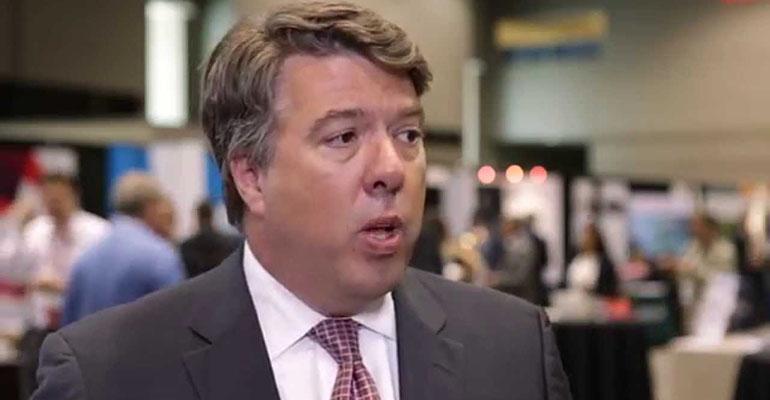Exchange traded funds are great tools for individual investors, but like anything else, there may be too much of a good thing. What are the risks investors encounter using ETFs? The temptation to invest in overly narrow areas of the market and trading too frequently, says William Belden, head of ETF business development at Guggenheim Investments.
ETFs’ combination of efficiency, transparency and flexibility are driving widespread adoption, he says. But there is a saturation point. Some of the ETFs launched in the last two years won’t last, he says, and before long the number of ETFs liquidated will exceed the number launched.
Belden discussed these and other issues in a recent interview.
WealthManagement.com: What are the biggest benefits to investors of ETFs?
William Belden: They are efficient, transparent and flexible. In terms of efficiency, interaction and transactions are easy. There’s also tax efficiency. Mutual funds will pay out some meaty capital gains this year in contrast to ETFs. Another efficiency is cost. You can make transactions at a low price, and expense ratios are generally low.
As for transparency, you can see all of what you own any day. That enables investors to be better equipped for decisions. Are you getting the exposure you want? When it comes to flexibility, you can buy and sell ETFs with great precision thanks to intraday liquidity. For those who want more of a trading profile, precision is helpful.
WM.com: What about the risks of ETFs?
WB: You can get into some narrowly defined areas of the market. Transparency helps you understand what you own, but you have to be equipped to make good decisions as well. If ETFs are used the wrong way, they can be damaging. That would include overly active trading or not knowing what investment exposures can do to your portfolio. Buyer beware is appropriate for any investor who goes into ETFs.
WM.com: Some critics have argued that the flood of money into ETFs could at some point turn into a flood of money out of ETFs, exacerbating declines. In particular, some say low volatility ETFs could turn into high volatility ETFs. What do you think?
WB: There is a potential risk for increased volatility, but the risk isn’t so important for low volatility ETFs. Despite the fact that they have grown, they’re still small. If there is a rush to get out, I don’t think that will drive markets by themselves.
Where liquidity could be challenged is where liquidity overall is tighter: high yield, banks loans, emerging market bonds, small-cap foreign stocks. That’s where by the nature of the securities themselves liquidity is challenged. But I don’t think that the impact will be that great. Despite the meteoric growth of ETFs, they are still a small percentage of market-cap.
To be sure, it’s important to know that ETFs themselves don’t protect you from what’s happening in the market place. To the extent there is a dramatic market move or increased volatility, an ETF itself won’t protect you from that.
Liquidity generally isn’t a problem getting out, but it’s a matter of at what price. You can see spreads widen. You can get out, but are you willing? The good thing is that price discovery is in front of the curtain as opposed to behind the curtain for mutual funds, where there’s no movement on net asset value until the end of the day.
WM.com: What are the most interesting recent developments in the ETF space?
WB: There is discussion at the SEC about [making it easier to provide ETFs]. That would be good for engendering competition and would invite innovation. The regulatory process is onerous and lengthy. The SEC has been discussing generic relief standards [as a baseline for offering ETFs].
I don’t think deregulation would go too far. They can strike a balance so that there is flexibility for an ETF sponsor to launch products and maintain the standard of ETFs without creating a standard that no one pursues. We just need to be sure that providers fit their products within the lanes.
WM.com: What important changes could be coming down the road?
WB: Perhaps regulation related to non-transparent, active ETFs? There are proposals on file with the SEC, but funds haven’t been brought to the market. Some active managers are keen on bringing non-transparent strategies.
I talked about the attractiveness of transparency earlier, but some managers don’t want transparency, saying it will take away their secret sauce. It seems that momentum builds for the idea, and then it stops.
Part of the appetite for these products will be driven by the performance of active managers. They haven’t performed so well recently in equities. Eventually active management will have its day, and then we may see more demand for non-transparent strategies. We’re big advocates for transparency. We believe it needs to be part of an ETF. But I understand the desire for non-transparency.
There will be a continuation of some recent themes, such as an uptick in price pressure for ETF sponsors to compete. That means lower fees. ETFs will continue to expand beyond the simple beta group.
In the next few years we are likely to see a year where more ETFs liquidate than launch. That will be a sign of maturity in the industry. There are more than 2,100 ETFs in the U.S. Some of the product launches of the last two years won’t work out as hoped.
We are headed for a period where there will be increased volatility for risk assets. When we see a period like that, we see ETFs benefit afterward. For example, after the credit crisis of 2007-08 and the taper tantrum of 2013, we saw markets drop and then an increase in use of ETFs. That will be another validation that ETFs work as advertised.





